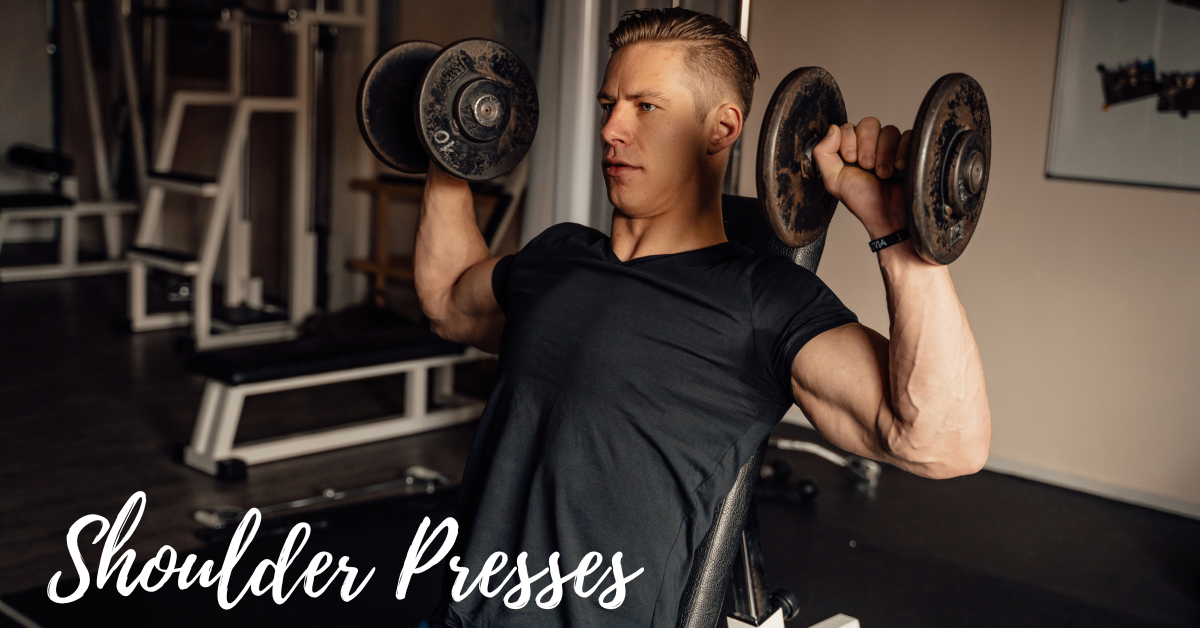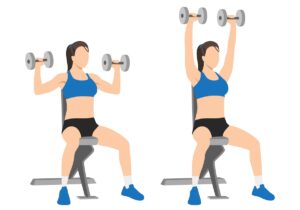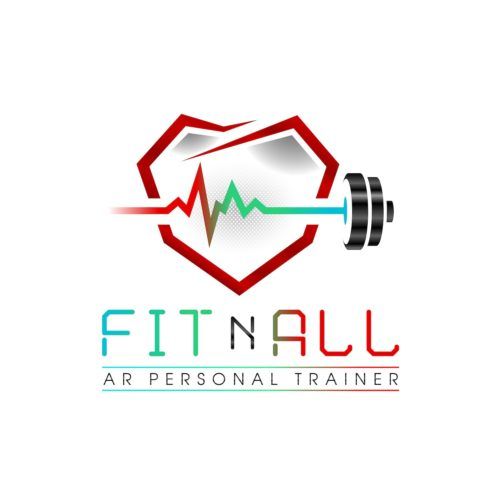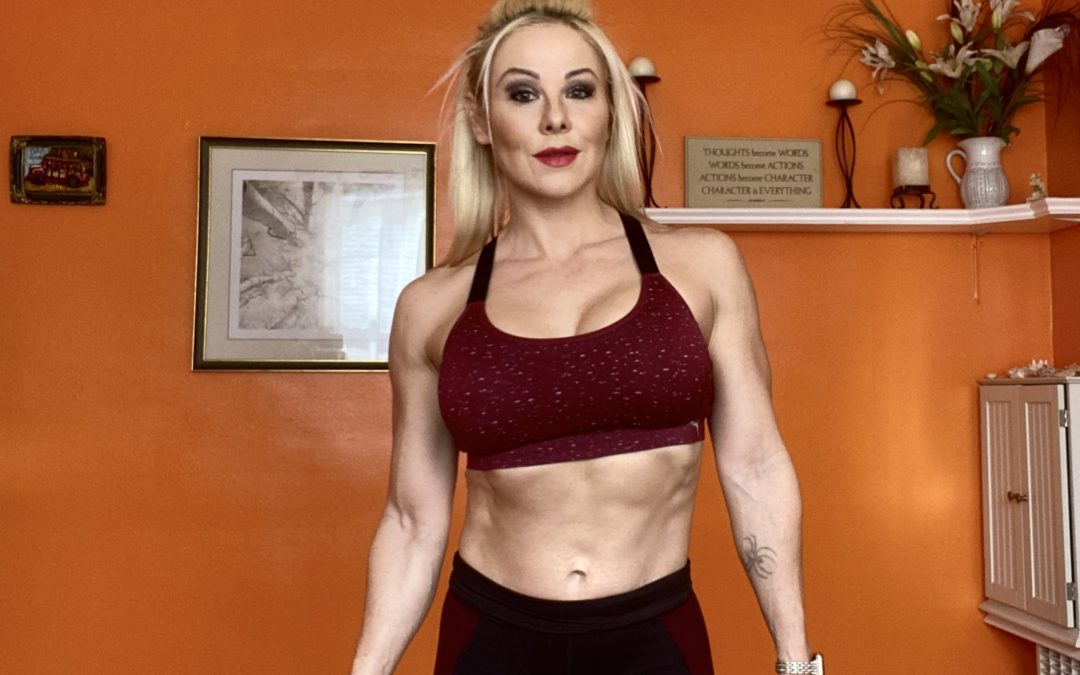The shoulder muscle is one of my favorite areas to train. A great exercise to build and strengthen the front and lateral deltoids, as well as the posterior deltoids, is the Dumbbell Shoulder Press. Read on to learn what muscles shoulder presses work, the differences between the shoulder press and the Arnold press, the benefits, and mistakes associated with the shoulder press, and the correct form to perform the shoulder press. Check out some ideas for a shoulder workout and watch the video on how to do shoulder presses.
The shoulder has several muscles that attach to the scapula, humerus, and clavicle. The largest shoulder muscle is the deltoid, which consists of the anterior, middle, and posterior fibers, giving the shoulder that nice rounded look. There are other muscles – the supraspinatus, infraspinatus, teres minor, and subscapularis – that form the rotator cuff and are vital in the dynamics of shoulder movement.

Other muscles involved in shoulder movement are the deltoid, supraspinatus, coracobrachialis, serratus anterior, pectoralis, trapezius, latissimus dorsi, teres major, and rhomboid major among others. The shoulder area is one of the most mobile spheres in the body. The wide range of motion permits great rotation, abduction, and adduction. Simultaneously, this versatility makes the shoulder area more prone to injury.
What Muscles Does the Shoulder Press Work?
The dumbbell shoulder press is a wonderful exercise since it stimulates numerous muscles. It works all three areas of the deltoid muscles:
- anterior (front) deltoid
- lateral (outer) deltoid
- posterior (rear) deltoid
Shoulder press, also, engages various secondary muscles:
- trapezius
- triceps
- upper chest
Differences Between the Dumbbell Shoulder Press and the Arnold Presses
The dumbbell shoulder press has some differences from the Arnold press:
- In the shoulder press, your palms face away from your body whereas, in the Arnold press, the movement starts with your palms facing your body
- In the shoulder press, you bend your elbows and raise your upper arms to shoulder height at a 90-degree angle so the dumbbells are at ear level. In the Arnold press, the arms are not flared out to the side of your body but in front of you – a little bit higher than at the top of a bicep curl
- The Arnold press involves a twisting of the hands at the top of the movement. This is not the case for the shoulder press
- The Arnold press stimulates more muscles than the shoulder press. Besides the anterior and lateral deltoids, it engages more the rear delts. It has the added benefit of secondarily stimulating the biceps and forearms
- Shoulder presses are better for shoulder health. Sometimes, the twisting movement of the Arnold press can put too much stress on an irritated shoulder joint. This can increase your risk of shoulder impingement, which is when the rotator cuff rubs against the humerus. This causes pain, swelling, pain, and reduced mobility.
Benefits of Dumbbell Shoulder Presses
- Great Looking Shoulders: Dumbbell shoulder presses work all the areas of the deltoids, helping mold beautiful rounded shoulders.
- Aesthetics: They are wonderful for upper body aesthetics as they engage the frontal and posterior areas of the body, as well as the back of the arms.
- Strength: Shoulder presses increase upper body strength, facilitating the performance of other movements such as chin-ups, bench presses, deadlifts, as well as other shoulder exercises.
- Hypertrophy: Shoulder presses help to build greater muscle mass and strength because they involve other muscles that assist in lifting the load.
- Versatile: They are highly versatile. They can be performed standing up or sitting down. You engage more muscles when you perform standing shoulder presses or overhead presses. Yet, you have a more controlled movement when performing seated shoulder presses.
- Posture: Working the anterior, medial, and posterior deltoids, as well as the stabilizer muscles, helps draw back the shoulders. This allows you to maintain a more upright posture.
- Muscle Symmetry: Dumbbell shoulder presses can help correct muscle imbalances and asymmetries. Utilizing unilateral training (dumbbells instead of a barbell) allows each side of the body to work separately so that no one side can compensate for a weaker side.
- Variable: They do not require a specific piece of equipment. You can use dumbbells, a barbell, or resistance bands.
How To Do The Dumbbell Shoulder Press

- Plant your feet solidly on the ground and grab a pair of dumbbells in each hand with arms at the sides of your body
- Stand with your back straight, core tight, and shoulders back
- Raise your upper arms with your elbows bent at a 90-degree angle so the dumbbells are at an ear-level position and your palms face away from your body
- Start pressing your arms up slowly above your head without fully straightening your arms
- Hold the weight at the peak for a second or two
- Slowly bring the weight down to the starting position
- Pause at the bottom for another second
- Repeat 8-12 times
? It is advisable to perform the dumbbell shoulder press seating down (seated shoulder press) if you have lower-back problems or if you are a beginner. Feel free to use a chair or bench to support your back.
Dumbbell Shoulder Press Mistakes
- Shrugging: Avoid shrugging to lift the weights up – This over-emphasizes the traps and doesn’t allow you to properly perform the exercise. Your shoulder blades should be down and back.
- Rounding Your Back: Avoid rounding your lower back. This excessive arching can hurt your back and may indicate that the weights are too heavy. Keep your back straight and use a weight that allows for proper movement mechanics.
- Locking Your Elbows: Avoid locking your elbows when the weights are at the top. This moves the emphasis away from your deltoids and puts it in your triceps. This exercise is not supposed to stimulate the triceps. By keeping the tension on the deltoid muscles, you truly stimulate them.
- Pushing Up Fast: Avoid pressing too fast since this keeps the muscles under tension for a shorter period. You should control the weights and perform the exercise in a controlled fashion
VIDEO: How to Do Standing Dumbbell Shoulder Presses
Another way of doing this exercise is by implementing Arnold Schwarzenegger’s style. He started with the palms facing him and rotated the wrists on the way down. This movement is initiated lower than ear level and the arms are in front instead of to the sides. He experimented with the movement in order to bring higher stimulation to the front delts. Those are called Arnold Presses.
Shoulder Workout
You can complete your shoulder workout by performing the following exercises:
- Dumbbell Face Pulls
- Front Raises
- Lateral Raises
- Rear Delt Raises among others.
As you can see the dumbbell shoulder press is a wonderful shoulder exercise. It offers tremendous benefits associated with hypertrophy, strength, endurance, and aesthetics. Now that you know how to properly perform shoulder presses, you can avoid the most common mistakes and enjoy their benefits. Remember, whether you want to lose weight, tone your body, or gain strength or size, all muscles must be trained.
Lift, Burn More Fat, Get Stronger, and Live Healthier!
To a Fitter Healthier You,
The Fitness Wellness Mentor



